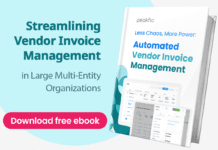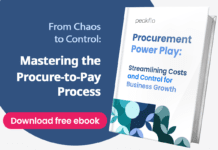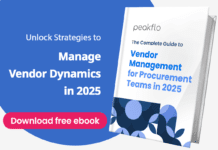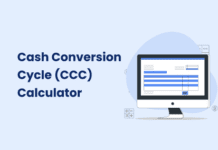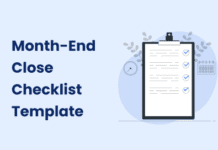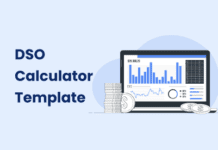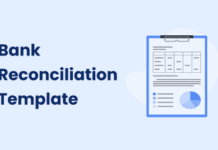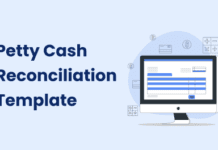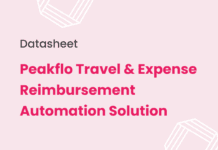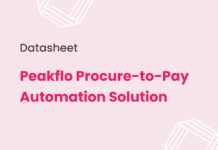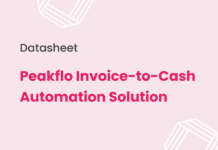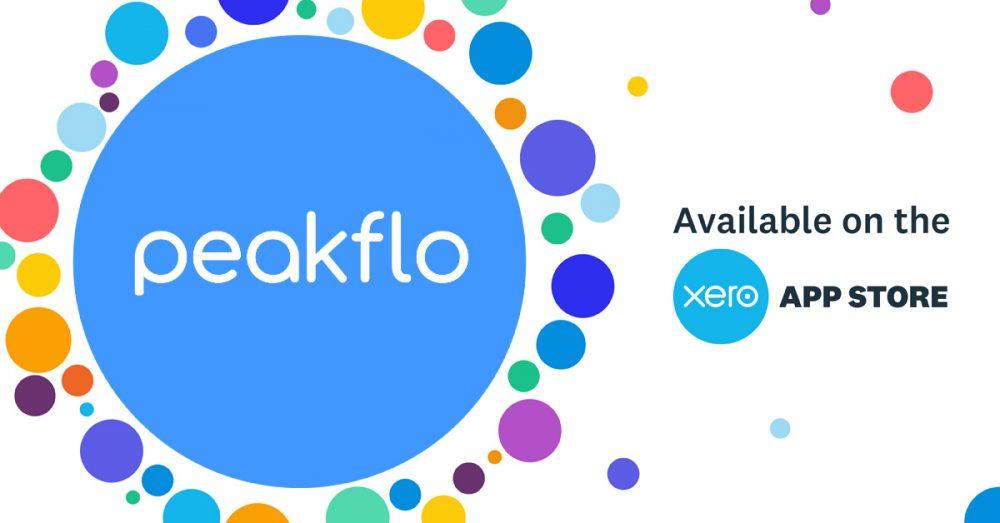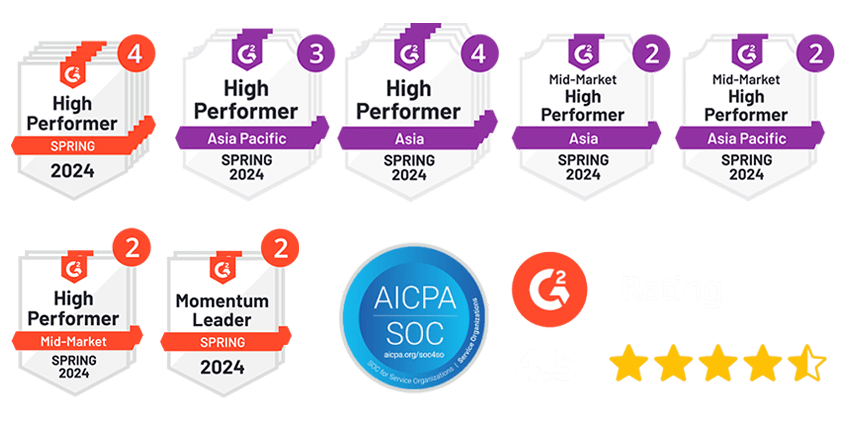Vertical AI agents are becoming a critical business differentiator, with experts projecting they’ll create companies worth over $300 billion in the coming years. Companies that haven’t started exploring this technology risk falling behind competitors who are already seeing significant returns.
What are vertical AI agents? These specialized AI systems focus on specific industries or business processes, helping companies streamline operations, improve decision-making, and enhance customer engagement. Unlike general AI solutions that try to do everything, vertical AI provides targeted solutions for niche business challenges.
The shift is significant. Many experts now view vertical AI agents as the next evolution of Software-as-a-Service (SaaS), with organizations like Y Combinator even rebranding B2B SaaS to vertical AI agents. Bessemer Venture Partners projects that the vertical AI market capitalization could grow to be 10x larger than legacy SaaS solutions. This isn’t just incremental improvement—it’s a fundamental change in how businesses operate.
The timeline is tight. Gartner predicts that 80% of enterprises will have adopted vertical AI agents by 2026, while AIM Research estimates the market will surpass $100 billion by 2032. Understanding this technology isn’t optional—your business needs to remain competitive in 2025 and beyond.
Understanding vertical AI agents and knowing how to implement them effectively is crucial for maintaining your competitive position and ensuring sustainable growth. This article will explore what vertical AI agents are, how they differ from traditional solutions, and why your business needs to act now.
What are Vertical AI Agents?
Vertical AI agents represent a fundamental shift in how artificial intelligence serves business needs. These specialized systems excel at solving industry-specific challenges rather than attempting to be all-purpose tools.
Specialized Intelligence for Business Functions
Vertical AI agents are intelligent systems meticulously designed for specific industries or business functions. Rather than offering broad capabilities across multiple domains, these AI systems use deep, domain-specific knowledge to perform complex tasks with remarkable precision. They’re essentially AI specialists—digital experts trained on industry-specific data, regulations, workflows, and standards.
What sets vertical AI agents apart is their narrow but deep focus. Think of them as having PhD-level expertise in one field instead of undergraduate knowledge across many subjects. They understand the nuances, terminology, and unique challenges within their domain, whether that’s healthcare diagnostics, legal document review, or financial fraud detection.
The purpose behind vertical AI agents is straightforward—to deliver superior performance where general-purpose AI falls short. Focusing exclusively on specific industries, these agents offer:
1. Higher accuracy in domain-specific tasks
2. Faster time-to-value for businesses
3. Seamless integration with existing industry workflows
4. More relevant insights based on specialized knowledge
Vertical AI agents aren’t just simple automation tools. They function as active, intelligent collaborators in mission-critical business processes. Many incorporate advanced components like memory systems that retain context across interactions, reasoning engines that apply domain-specific logic, and cognitive skills modules for specialized functions such as compliance checks or risk assessments.
Real-World Applications Across Industries
Across industries, vertical AI agents are already delivering significant value through their specialized capabilities:
Healthcare operations benefit from AI agents like Abridge that convert doctor-patient conversations into structured medical notes, effectively automating clinical documentation. ShowAndTell enhances dental care with AI-powered treatment coordination, unlocking up to 50% of revenue previously tied up in unapproved treatment plans. These agents integrate with electronic health records to streamline patient data management and provide diagnostic support.
Financial institutions employ vertical AI agents for risk management, fraud detection, and regulatory compliance. Feedzai protects over 1 billion consumers, processes 70 billion events yearly, and secures $8 trillion in payments annually. Salient streamlines loan servicing operations across multiple communication channels, achieving a 60% reduction in handle times.
Legal practices use vertical AI agents like EvenUp to generate demand letters for personal injury cases with remarkable accuracy. These systems understand legal terminology, precedents, and documentation requirements that general AI models would struggle with.
Retail and e-commerce companies deploy vertical AI agents to power personalized recommendation engines that analyze customer behavior and offer tailored shopping experiences. These systems help businesses boost sales while helping customers find exactly what they need.
Manufacturing facilities rely on vertical AI agents that predict equipment failures by analyzing IoT and production data. Axion Ray, for instance, helps prevent costly downtime through predictive maintenance based on domain-specific knowledge of industrial equipment.
Customer service teams use vertical AI agents to manage routine inquiries and transactions, providing personalized responses based on customer history. They can handle tasks ranging from returns processing to delivery tracking, enhancing customer experience while freeing human agents for complex issues.
Each example demonstrates how vertical AI agents deliver value through deep domain understanding and specialized capabilities that general-purpose AI simply cannot match.
SaaS Evolution: Why Vertical AI Represents a Bigger Opportunity
Image Source: LinkedIn
Business technology follows predictable evolution cycles. Software as a Service (SaaS) changed how companies accessed technology over the past two decades—now vertical AI agents are creating an even more significant shift.
SaaS Success and Its Limitations
SaaS emerged in the early 2000s as a better approach to software delivery, replacing cumbersome on-premise installations with scalable, cloud-based solutions. The breakthrough came in 2004 with the XML HTTP request, which enabled web applications to become truly interactive. This technological advancement laid the groundwork for platforms like Salesforce, making cloud computing a mainstream enterprise solution.
The growth was remarkable. SaaS companies captured over 40% of all venture capital funding during their rise. The market expanded to USD 300 billion and created more than 300 unicorns. SaaS fundamentally changed how businesses accessed and implemented software solutions.
However, SaaS has significant constraints:
- Limited customization – Businesses struggle to tailor standardized applications to their unique requirements
- Connectivity dependency – Service disruptions or internet outages can halt business operations completely
- Security concerns – Shared infrastructure creates attractive targets for cybercriminals
- Integration challenges – Many solutions offer minimal integrations with other platforms
- Escalating costs – Pricing becomes expensive for scaling businesses as user numbers grow
These limitations have created an opportunity for the next evolution in business technology.
Why Vertical AI Could Be 10x Bigger Than SaaS
Vertical AI agents represent a fundamental shift beyond SaaS—they’re not just better tools, they’re complete workflow automations. Y Combinator experts project vertical AI agents could create companies worth over USD 300 billion, potentially growing 10x larger than the SaaS companies they replace.
The difference lies in what they replace. SaaS enables better management, while vertical AI automates entire workflows. SaaS tools require extensive customization, whereas vertical AI agents come pre-loaded with industry-specific workflows that automatically update when regulations change.
This growth potential stems from two key factors. First, vertical AI agents replace both software and labor costs. Companies typically spend significantly more on employees than on software, creating enormous value opportunities. Second, these agents improve rapidly, advancing every three months and continually enhancing their capabilities.
The results are measurable. Companies using vertical AI tools report productivity increases of 66%, equivalent to 47 years of productivity improvements compressed into a single year. Vertical AI startups founded after 2019 are growing approximately 400% year-over-year while maintaining healthy 65% gross margins.
This shift mirrors the SaaS revolution from two decades ago, though early vertical AI implementations aren’t directly competing with legacy SaaS. They’re targeting high-cost, repetitive, language-based tasks in sectors like legal, healthcare, and finance that traditional SaaS largely missed.
Analysts predict that at least five vertical AI companies will reach USD 100 million in annual recurring revenue within the next 2-3 years. The evolution from SaaS to vertical AI represents not just a new technology cycle, but a much larger market opportunity.
Industries Being Transformed by Vertical AI
Image Source: SlideTeam
Vertical AI agents are making significant impacts across industries by addressing sector-specific challenges that general AI solutions simply cannot handle. These purpose-built technologies deliver measurable results where businesses need them most.
1. Healthcare
Healthcare organizations use vertical AI agents to tackle complex administrative tasks while improving patient care. These systems integrate directly with electronic health records to streamline appointment scheduling, medical documentation, and patient data management. Mayo Clinic has implemented a scalable “AI factory” approach that incorporates cross-disciplinary considerations for real-world implementation.
Paps AI in Uganda demonstrates how vertical agents can be tailored for resource-constrained environments, creating an end-to-end cervical cancer screening platform. These specialized systems assist in diagnostic imaging analysis and provide virtual assistants for post-treatment care instructions, allowing healthcare professionals to focus on patient care rather than paperwork.
2. Finance
Financial services companies face unique challenges with complex regulations and legacy systems that require extensive manual data entry. Vertical AI agents excel in this environment by autonomously reviewing documents against regulatory requirements and identifying key risk areas.
The scale is impressive—specialized systems in the lending process handle 70 billion events yearly and secure $8 trillion in payments annually. Unlike general-purpose AI, financial vertical agents incorporate industry-specific trained data, enabling them to manage complex workflows like fraud detection, underwriting, and credit scoring.
Peakflo offers a highly intelligent, self-improving automation platform for finance and operations—covering everything from invoice-to-cash to procure-to-pay—augmented with autonomous voice agents that streamline routine communication. This empowers finance and operations teams to reclaim hours, boost accuracy, and focus on strategic work.
3. Retail and E-commerce
Retail operations benefit from vertical AI agents that autonomously optimize business processes through real-time decision-making. Many retailers currently rely on reactive BI dashboards, but AI agents proactively resolve issues like stockouts without human intervention.
These systems dynamically personalize ad creatives based on contextual triggers such as location, weather, and trending topics, leading to a 30% improvement in ad performance and a 25% cost reduction. Vertical agents also enhance supply chain performance through automated inventory management and predictive demand forecasting.
4. Manufacturing
Manufacturing companies implement vertical AI agents to address sector-specific operational challenges. These systems optimize production schedules by aligning with supply chain requirements and preventing equipment failures through predictive maintenance.
Vertical agents in quality control use computer vision to detect minute defects, allowing continuous monitoring during production. These systems also promote sustainability by analyzing energy consumption patterns and suggesting corrective actions to reduce waste.
5. Transportation
The transportation industry faces constant pressure to maximize efficiency, reduce delays, and manage rising operational costs. Vertical AI agents are helping transportation companies tackle these challenges by automating dispatch coordination, optimizing route planning, and improving customer communication.
AI agents integrate directly with fleet management systems to monitor vehicle telemetry in real time, suggest fuel-efficient routes, and predict maintenance needs before breakdowns occur. In public transit, vertical agents analyze traffic, ridership patterns, and service disruptions to dynamically adjust schedules, boosting punctuality and service reliability.
For logistics and freight companies, AI voice agents handle high volumes of tracking requests, customer updates, and ETA confirmations. These systems can initiate real-time status calls, process delivery exceptions, and update shipment records—freeing up human staff for complex logistics issues.
Leading transportation networks also deploy vertical agents to analyze driver behavior and optimize load assignments based on time, location, and delivery urgency. This not only reduces empty miles but also cuts fuel costs and improves delivery SLAs.
Each industry example demonstrates how vertical AI agents create value through deep domain understanding and specialized capabilities that address specific business challenges rather than providing generic solutions.
Why Vertical AI Agents Matter for Your Business in 2025
Vertical AI agents have become a critical competitive differentiator for companies looking to stay ahead. Their specialized capabilities reshape business operations in ways that general AI solutions simply cannot match.
1. Efficiency Gains That Change Everything
Companies that have adopted vertical AI agents report striking productivity gains, with early adopters achieving 2-5× efficiency improvements across specialized workflows. This dramatic boost comes from these agents’ ability to handle complex, industry-specific tasks that previously required extensive human intervention. Vertical AI solutions process specialized data with unprecedented precision, providing actionable insights where general AI models often generate excessive irrelevant data requiring manual filtering.
Agentic Workflows cover a wide range of use cases: accounts payable (PO-matching, vendor onboarding), AR (invoice submission, cash application), anomaly detection, approvals, and expense management. Here’s how the process works:
1. Record & Upload: Users record their current screen workflows with audio explanations, capturing the full AS-IS process.
2. Workflow Creation: Peakflo AI analyzes the recording, decomposes the tasks into steps, and builds an automated workflow.
3. Automation: The system executes tasks—like invoice handling, approvals, reconciliations, and document extraction—using LLM-driven logic, API/ERP integrations, and intelligent decision-making.
4. Self-Improvement: As Peakflo repeats the workflow, it learns from exceptions and optimizes execution paths, adapting without manual rule updates.
2. Real Cost Savings and Resource Optimization
The financial impact is substantial. Organizations report operational cost reductions of 40-80%. One insurance firm replaced a team of 10 people with a single AI agent, freeing the other 9 employees to focus on strategic work. These specialized systems minimize the need for human intervention in repetitive tasks, enabling businesses to allocate talent to higher-value activities. Domain-specific AI agents offer lower implementation costs due to pre-trained industry models and faster realization of value with minimal retraining efforts.
3. Speed and Intelligence That Scales
Vertical AI agents can be deployed in just 2-4 weeks, compared to the 6-12 months typically required for traditional enterprise software rollouts. Domain-specific AI focuses on narrow datasets, achieving faster training times and lower computing costs while maintaining high performance. This scalability allows companies to rapidly expand AI capabilities across operations without proportional increases in infrastructure investments.
The domain-specific intelligence these agents provide delivers immediate value by addressing industry-specific pain points without extensive modifications. They offer regulatory compliance capabilities that automatically flag issues, track regulation changes, and maintain consistent compliance without manual intervention. Currently, less than 1% of industries use vertical AI, yet those pioneers are growing 200-300% annually, signaling the massive growth potential as adoption accelerates throughout 2025.
Managing these specialized AI implementations requires a proactive approach. Companies that start now position themselves to capture the full benefits while competitors are still evaluating options.
Vertical vs Horizontal AI Agents: Making the Right Choice
Choosing between vertical and horizontal AI agents requires understanding their distinct capabilities and limitations. This decision fundamentally impacts how your business implements AI and the results you can expect.
Vertical AI Agents: Deep Expertise with Trade-offs
Vertical AI agents excel through deep domain expertise in specific industries or functions. These specialized systems deliver superior performance in their focused areas, with implementation times as short as 2-4 weeks compared to 6-12 months for traditional enterprise software. However, fewer than 10% of vertical AI use cases deployed ever make it past the pilot stage.
Advantages:
- Quick implementation with pre-built features for specific tasks
- Specialized expertise within narrow focus areas
- Pre-configured capabilities matching industry needs
- Cost-effective for specific use cases
Limitations:
- Limited configurability for evolving needs
- Provider dependence for modifications
- Integration challenges with unique business systems
- Data hungry, requiring quality domain-specific information
Horizontal AI Agents: Broad Functionality with Compromises
Horizontal AI agents, like Microsoft Copilot or Google AI Workspace, offer broad functionality across departments. These are primarily off-the-shelf solutions that can be deployed enterprise-wide.
Advantages:
- Versatility across multiple business functions
- Easily scalable as businesses grow
- Pre-trained on large-scale, diverse datasets
- Cost-efficient with faster deployment for general tasks
Limitations:
- Lack of deep proficiency for specialized tasks
- Tend to deliver diffuse, hard-to-measure gains
- Generate generic outputs requiring additional filtering
- Face accuracy challenges with industry-specific nuances
How to Choose Based on Your Business Needs
Start by identifying your specific challenges. For specialized intelligence in one area, vertical AI likely offers better value. For broad applications across departments, horizontal solutions may be more appropriate.
AI Voice Agents: Voice AI agents autonomously handle large volumes of routine calls, outreach, follow-ups, invoice collection, order updates, and customer queries—delivering human-like, real-time, multilingual interactions. System Integration & Escalation: These agents operate continuously, feed response outcomes directly back into ERP workflows, escalate disputes, send notifications, or schedule human handoff when needed. All conversations are logged and integrated with financial records.
Consider your industry complexity—highly regulated sectors typically benefit from vertical solutions. Evaluate your budget constraints and growth plans. Vertical agents generally require higher initial investment but deliver more specialized value, whereas horizontal agents provide broader functionality at lower entry costs.
Many organizations find a hybrid approach most effective—deploying vertical AI for critical domain-specific workflows while using horizontal AI for general productivity enhancement. This strategy allows businesses to maximize both the depth and breadth of AI capabilities.
How to Successfully Adopt Vertical AI Agents
Image Source: Info-Tech Research Group
Implementing vertical AI agents requires a systematic approach to ensure successful adoption. Managing this process carefully helps maximize the potential of these specialized systems while avoiding common pitfalls that can derail implementation efforts.
1. Identify Your Automation Goals
Start by pinpointing specific business pain points where vertical AI agents can deliver measurable value. Focus on areas with repetitive tasks, operational bottlenecks, or inefficiencies that directly impact your bottom line.
Clearly define what you want to achieve—whether that’s improving efficiency, automating manual work, or reducing operational expenses. Successful vertical AI implementations typically target operational cost reductions of 40-80% and productivity increases of 66%. Set specific, measurable goals that align with your business objectives.
2. Choose the Right Platform or Vendor
Conduct a pilot project or proof of concept before committing to full-scale implementation. This approach allows you to test the solution with real workflows and actual business scenarios, helping you evaluate performance before making significant investments.
Consider integration capabilities carefully. The best vertical AI providers build solutions that connect seamlessly with your existing tools without requiring you to replace your current tech stack. To see agentic workflows and AI voice agents in action, schedule a call with Peakflo experts today.
3. Prepare High-Quality, Domain-Specific Data
Quality data is the foundation of successful vertical AI implementation. These agents need clean, structured, and compliant data to perform effectively. This means investing time upfront in curating, annotating, and organizing your data before training begins.
Your data preparation should include removing duplicates, anonymizing sensitive information, tagging entities, and ensuring proper structural formatting. Remember—poor data quality will undermine even the most sophisticated AI agent.
4. Establish Compliance and Governance
Set up comprehensive governance frameworks for your vertical AI implementation. This is particularly critical if you operate in regulated industries like healthcare, finance, or legal services.
Implement systems to detect and address potential biases in both data and algorithms. Regularly audit AI models for unintended biases and stay current with industry regulations to maintain ongoing compliance. Build these checks into your processes from day one rather than trying to add them later.
5. Maintain Human Oversight
Human oversight remains essential throughout vertical AI adoption. While agents can automate most routine tasks, critical decisions still require human validation, especially in regulated environments.
Design your implementation with clear intervention points where experts can review and approve actions. This human-in-the-loop approach improves model accuracy through expert feedback while ensuring stakeholders that AI systems enhance rather than replace human judgment.
What’s Next for Vertical AI Agents
The next generation of vertical AI agents promises to address current limitations while opening new business opportunities. These developments will make AI systems more reliable, compliant, and effective for business operations.
Modular architectures and self-validation
Vertical AI agents are moving toward modular architectures that separate planning, reasoning, acting, and validation into independent components. This modular approach offers businesses significant advantages—you can update individual components without disrupting entire systems, reducing downtime and implementation costs.
What does this mean for your business? These systems will become more adaptable to changing business needs. Instead of replacing entire AI systems when requirements change, you can modify specific modules while keeping the rest operational.
Self-validation capability represents another major advancement. Modern vertical agents now perform step-by-step simulation-driven planning and auto-debugging. This self-checking process reduces errors and improves decision reliability, critical for businesses where mistakes can be costly.
Function-calling hallucination detection adds another layer of protection. These systems can identify when AI agents misinterpret instructions or choose inappropriate tools, flagging potential issues before they impact operations. For businesses, this means fewer costly errors and more reliable automated processes.
Embedded compliance and ethics
Vertical AI agents are incorporating built-in bias detection, regulatory compliance, and traceable decision logs directly into their operations. This embedded compliance approach integrates regulatory checks and risk controls into everyday workflows.
AI governance solutions now support ethical agent behavior through monitoring, evaluation, and bias mitigation tools. Researchers are developing alignment approaches like Alignment Studio, which aligns language models with government regulations and company ethical guidelines.
Why does this matter for your business? Rather than treating compliance as an afterthought, these AI agents build it into their core functionality. They automatically flag, halt, or address potential compliance issues without manual intervention. This automation keeps humans responsible for final decisions while using AI to ensure work quality and regulatory adherence.
For businesses in regulated industries like healthcare, finance, and legal services, this embedded compliance capability will be essential. These systems will help maintain consistent compliance without manual oversight, reducing regulatory risk while improving operational efficiency.
Challenges Companies Face with Vertical AI Agents
Vertical AI agents offer significant benefits, but implementing them presents real challenges that organizations must address. These obstacles require careful planning and strategic approaches to overcome.
1. Data Privacy and Compliance
Vertical AI agents require large volumes of data, which can create privacy concerns around lawfulness, fairness, and purpose limitation. Many AI technologies access personal information without individuals fully understanding how their data will be used. Companies in regulated industries face additional complexity as they navigate evolving regulatory landscapes while protecting sensitive information.
The current approach places too much responsibility on AI vendors to remove personal information from training data—an inadequate solution that leaves enterprises vulnerable. Organizations need robust internal safeguards rather than relying solely on vendor promises about data handling.
2. Integration with Legacy Systems
Legacy systems can be a significant hurdle for vertical AI implementation. Many organizations operate on outdated infrastructure that wasn’t designed for modern AI applications. This creates technical compatibility issues that require middleware solutions or APIs to bridge the gap between old and new technologies.
Data quality issues compound these integration challenges. Poor data quality remains one of the top reasons AI projects fail. Successful integration requires high-quality data preparation and reliable communication channels between AI experts and IT professionals.
3. Employee Resistance and Change Management
Employee resistance presents a major obstacle to vertical AI adoption. Nearly half (45%) of CEOs report their employees are resistant or openly hostile to AI implementation. This resistance typically stems from fear of job displacement, uncertainty about AI’s impact on their roles, and general concerns about job security.
Addressing this challenge requires clear communication about AI’s role as a tool that enhances rather than replaces human workers. Organizations with aligned workforces were 29% less likely to cite fears about AI affecting employee engagement. Targeted training and transparency about implementation plans help reduce resistance.
4. Avoiding Agentic Hallucinations
Agentic AI systems present unique reliability challenges. These systems often make multiple calls to language models, which can compound hallucination risks. Organizations must implement robust guardrails—including retrieval-augmented generation and self-consistency checks—to prevent factually incorrect outputs.
For critical applications, human oversight remains essential. Some systems implement hallucination detection scores that trigger human intervention when reliability thresholds aren’t met. This approach helps prevent costly errors while maintaining the efficiency benefits of AI automation.
A Way Forward
Vertical AI agents represent a fundamental shift in business operations that companies can no longer ignore. These specialized systems deliver targeted solutions that general AI cannot match, addressing industry-specific challenges with precision and efficiency.
The evidence is clear. Companies implementing vertical AI agents report 66% productivity increases and 40-80% cost reductions. Implementation timeframes have shortened from months to weeks.
Your business faces a critical choice. Less than 10% of vertical AI implementations currently move beyond pilot stages, yet those that do gain significant competitive advantages. Wait too long, and competitors will establish insurmountable leads in efficiency, cost structure, and service quality.
Vertical AI agents aren’t just another technology trend—they represent a fundamental change in how business operates. Whether you choose targeted vertical solutions or broader horizontal implementations depends on your specific needs, but action is essential.
The companies that succeed beyond 2025 will be those that embrace vertical AI agents today. Start with pilot projects, learn from implementations, and scale gradually. Most importantly, begin now before the competitive window closes.
Try out Peakflo today, and witness how agentic workflows and AI voice agents can automate your finance operations while maintaining the highest standards of accuracy and compliance.
FAQs
Q1. How are vertical AI agents transforming businesses in 2025?
Vertical AI agents are revolutionizing industries by providing specialized, domain-specific solutions. They’re automating complex workflows, increasing productivity by up to 66%, and reducing operational costs by 40-80%. These AI systems are particularly impactful in healthcare, finance, retail, and manufacturing sectors.
Q2. What advantages do vertical AI agents offer over traditional SaaS solutions?
Vertical AI agents offer deeper industry-specific expertise, faster implementation (2-4 weeks vs. 6-12 months for SaaS), and the ability to automate entire workflows rather than just improve management. They also continuously improve their capabilities, updating every three months to adapt to changing regulations and industry needs.
Q3. How can companies successfully implement vertical AI agents? Successful implementation involves defining clear automation goals, selecting appropriate vendors, preparing high-quality domain-specific data, establishing governance frameworks, and maintaining human oversight. It’s crucial to conduct pilot projects, ensure compliance, and address potential employee resistance through clear communication and training.
Q4. What challenges do businesses face when adopting vertical AI agents?
Key challenges include data privacy and compliance issues, integration with legacy systems, employee resistance to change, and the risk of AI hallucinations. Companies must navigate complex regulatory landscapes, bridge technical gaps, manage workforce concerns, and implement robust safeguards to ensure AI reliability and accuracy.
Q5. What does the future hold for vertical AI agents?
The future of vertical AI agents includes advancements in modular architectures, self-validation capabilities, and embedded compliance frameworks. These improvements will enhance flexibility, reduce errors, and streamline regulatory adherence. As adoption accelerates, vertical AI is projected to create a market potentially 10 times larger than traditional SaaS solutions.

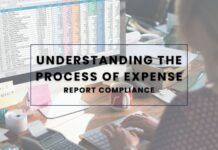







![Why AI Sales Calls Are Making Good Sales Reps Even Better [2025 Guide] ai sales calls](https://cdn-kmjmp.nitrocdn.com/YvtqmrsiHUxqerlSiZgbfzqqTARWTElr/assets/images/optimized/rev-834053b/blog.peakflo.co/wp-content/uploads/2025/09/65168cf6-3001-4733-8cbc-12d5684cf449-218x150.webp)







